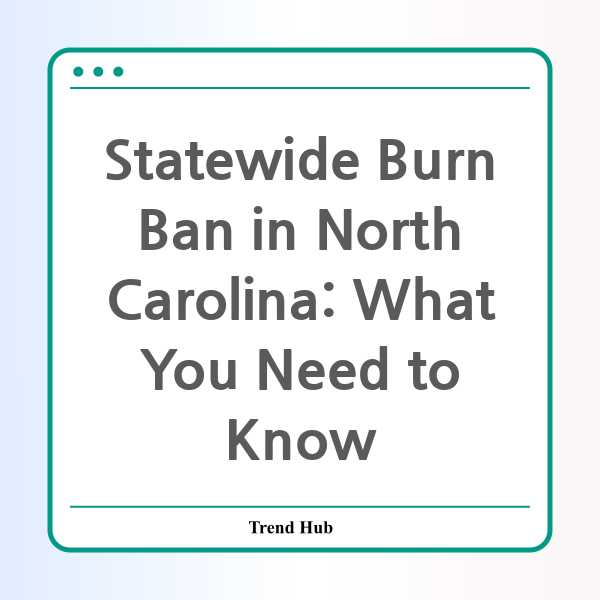* This website participates in the Amazon Affiliate Program and earns from qualifying purchases.

As we transition into spring, North Carolinians are facing a serious situation regarding wildfire safety. The North Carolina Forest Service has enacted a statewide burn ban effective immediately, marking a significant measure to protect lives, property, and our vital forest resources. But what does this mean for residents across the state? Let’s dive into the details of the burn ban and the current wildfire threat in North Carolina.
On March 21, at 8 a.m., the burn ban was put into effect across all 100 counties in North Carolina. This decision was triggered by rising wildfire activity and notably dry conditions that have persisted in recent months. In fact, many areas in the state have recorded rainfall deficits, with some regions seeing over five inches less rain than usual since October. This lack of moisture leaves vegetation highly flammable, especially as March and April mark the windiest months of the year.
The rationale for the burn ban is clear: the combination of dry ground, strong winds, and the onset of spring wildfire season creates the perfect storm for wildfires to ignite and spread rapidly. According to Agriculture Commissioner Steve Troxler, humans are the leading cause of wildfires in North Carolina. Therefore, adhering to the burn ban is crucial to minimizing the risk of fire hazards.
Here are some critical points regarding the burn ban:
- All Open Burning Prohibited: The ban prohibits all forms of open burning. This means even previously issued burn permits are now canceled, and no new permits will be granted until the ban is lifted.
- Penalties for Violation: Violating the burn ban can lead to significant fines—up to $100 plus $183 in court fees. Anyone found responsible for starting a fire may also face liability for any costs incurred during fire suppression efforts.
- Enforcement: Local fire departments and law enforcement authorities are collaborating with the NC Forest Service to enforce these regulations actively.
As of the latest reports, multiple active wildfires are already burning in North Carolina, with the most notable incidents occurring in Polk County, where three separate fires have scorched over 1,200 acres. To stay updated on wildfire activity, residents can refer to the interactive wildfire map provided by the NC Forest Service, which displays real-time information on containment and the status of active fires.
The state is well aware of the challenges posed by these wildfires. The average wind speed in March can reach around 8.8 mph, with gusts potentially soaring much higher. As forecasts predict winds could hit up to 40 mph, fire conditions are likely to remain critical over the coming weekend.
In closing, it’s essential for all North Carolinians to remain vigilant during this delicate time. Please practice fire safety at all times, especially when disposing of cigarettes or other materials that could ignite a fire. If you have questions about the burn ban or its implications in your county, reach out to your local Forest Service ranger or county fire marshal.
The health and safety of our community depend on our collective adherence to these guidelines. Remember that following the burn ban is not just a matter of law but a crucial step in protecting our beautiful North Carolina landscapes and, most importantly, each other.
* This website participates in the Amazon Affiliate Program and earns from qualifying purchases.